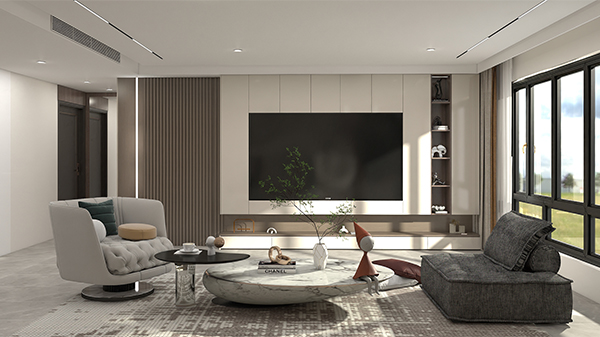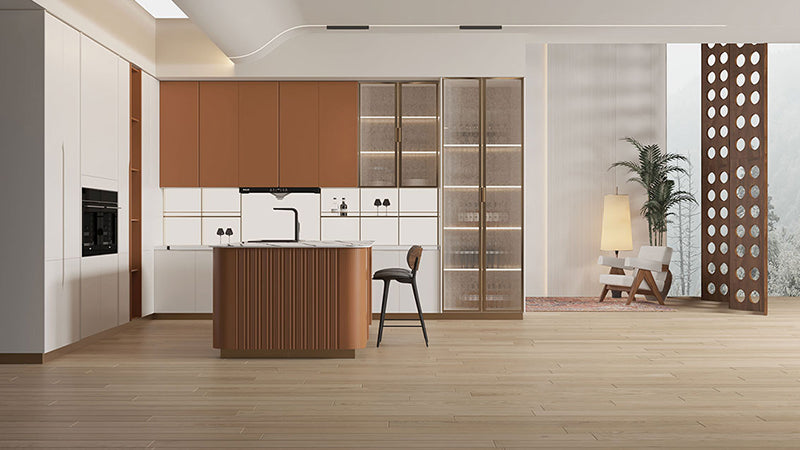6 Essential Tips for Designing Your Bedroom
Ever walked into a room that just felt perfect? More often than not, it’s because the space boasts a simple yet effective design. However, achieving this simplicity, especially in a bedroom, can be quite challenging.

If you’re fortunate enough to design a bedroom from scratch or renovate an existing one, you have the opportunity to craft a space that’s both practical and aesthetically pleasing.
Here are six essential tips to help you maximize your bedroom’s potential:
1. Optimize Circulation
Keep the flow of movement on one side of the room. Hotels master this concept by sticking to straightforward floor plans that work efficiently. This can become tricky with en suite bedrooms or those with doors leading outside, but a clear, unobstructed path will enhance both the look and functionality of your space.
2. Prioritize the View
A bedroom feels more inviting when the first thing you see is a beautiful view out the window, rather than the bed. When designing or reconfiguring your bedroom, aim to position the layout so that it highlights a pleasing vista, whether it's a picturesque landscape or your charming backyard.
3. Ensure Privacy
It's important to be able to leave your bedroom door open without sacrificing privacy. Incorporating a small foyer or hallway can create a buffer between the bedroom and more public spaces like the family room or kitchen. This prevents direct sightlines into the bedroom from these areas, maintaining your personal retreat’s sense of seclusion.

4. Connect with Nature
If your climate allows, linking your bedroom to the outdoors can make the space feel more expansive and invite natural light. For ground-floor bedrooms or those with an adjacent terrace, consider adding French doors. This not only enlarges the visual space but also enhances the room's ambiance with outdoor elements.
5. Plan Your Furniture Layout
Your bedroom’s design should accommodate all your furniture needs. While most bedroom plans include a designated bed wall, don’t forget to account for dressers, nightstands, TVs, chairs, and desks. Collaborate with your architect or designer to ensure there’s ample space for these pieces and sufficient room for easy movement around the bed.
6. Take Your Time
Achieving great design requires patience and fine-tuning. Don’t rush through the planning stages. Investing extra time in refining your design will pay off, resulting in a bedroom that is both efficient and tailored to your lifestyle.
By following these tips, you can create a bedroom that is not only beautiful but also highly functional, providing a serene retreat tailored to your needs.

If you’re fortunate enough to design a bedroom from scratch or renovate an existing one, you have the opportunity to craft a space that’s both practical and aesthetically pleasing.
Here are six essential tips to help you maximize your bedroom’s potential:
1. Optimize Circulation
Keep the flow of movement on one side of the room. Hotels master this concept by sticking to straightforward floor plans that work efficiently. This can become tricky with en suite bedrooms or those with doors leading outside, but a clear, unobstructed path will enhance both the look and functionality of your space.
2. Prioritize the View
A bedroom feels more inviting when the first thing you see is a beautiful view out the window, rather than the bed. When designing or reconfiguring your bedroom, aim to position the layout so that it highlights a pleasing vista, whether it's a picturesque landscape or your charming backyard.
3. Ensure Privacy
It's important to be able to leave your bedroom door open without sacrificing privacy. Incorporating a small foyer or hallway can create a buffer between the bedroom and more public spaces like the family room or kitchen. This prevents direct sightlines into the bedroom from these areas, maintaining your personal retreat’s sense of seclusion.

4. Connect with Nature
If your climate allows, linking your bedroom to the outdoors can make the space feel more expansive and invite natural light. For ground-floor bedrooms or those with an adjacent terrace, consider adding French doors. This not only enlarges the visual space but also enhances the room's ambiance with outdoor elements.
5. Plan Your Furniture Layout
Your bedroom’s design should accommodate all your furniture needs. While most bedroom plans include a designated bed wall, don’t forget to account for dressers, nightstands, TVs, chairs, and desks. Collaborate with your architect or designer to ensure there’s ample space for these pieces and sufficient room for easy movement around the bed.
6. Take Your Time
Achieving great design requires patience and fine-tuning. Don’t rush through the planning stages. Investing extra time in refining your design will pay off, resulting in a bedroom that is both efficient and tailored to your lifestyle.
By following these tips, you can create a bedroom that is not only beautiful but also highly functional, providing a serene retreat tailored to your needs.



